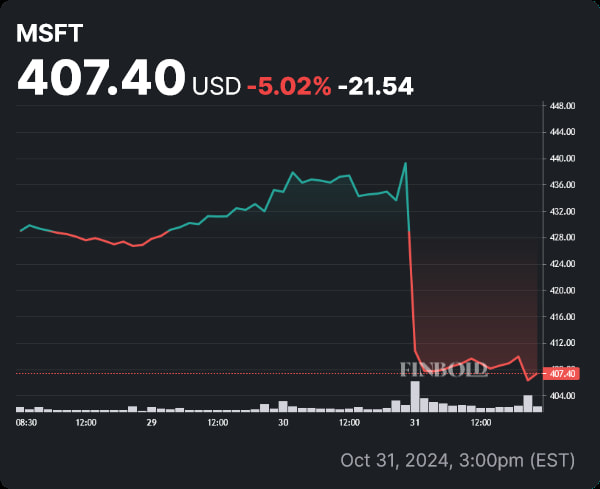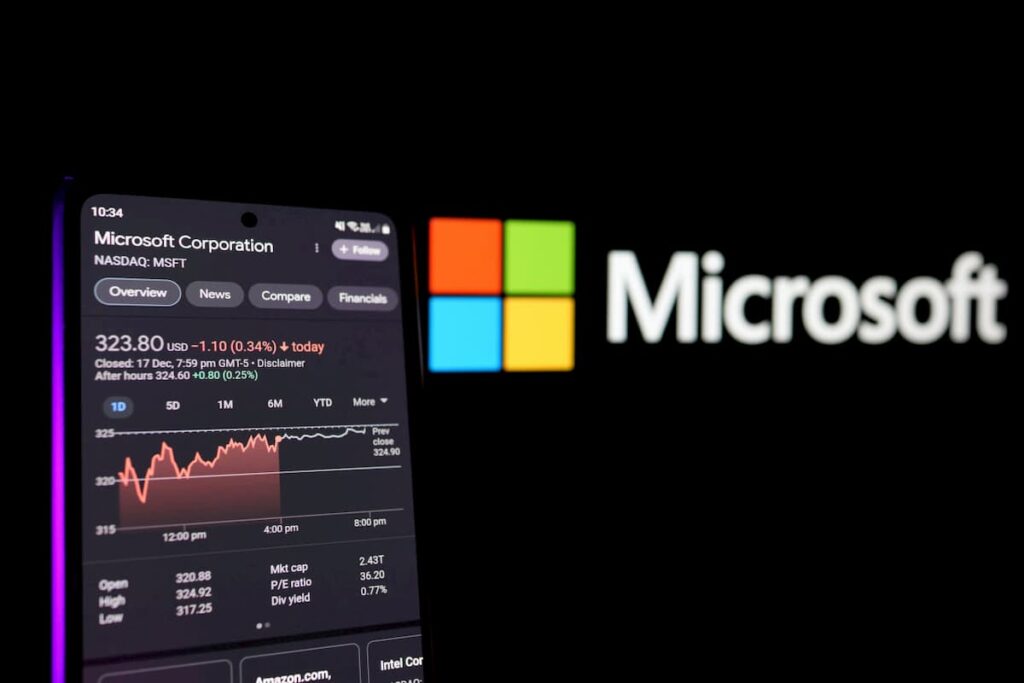Software giant Microsoft (NASDAQ: MSFT) released its FY 2025 Q1 report on October 30. The results were impressive, generally beating estimates — however, the issue of whether or not high AI spending is justified has arrived in full force.
What’s more, that debate isn’t limited to just MSFT — after this earnings season, investors are generally wary of high expenditures in this area coming from the magnificent seven.
The brainchild of Bill Gates showed strong results in terms of earnings, revenue, and growth, but markets turned bearish on account of the company’s lower than expected guidance.
At press time, MSFT stock price is at $407.40 in the premarket session, having shed 5.02% in value since the report was published. This has cut Microsoft stock’s gains down to 10.55% on a year-to-date (YTD) basis.

MSFT stock price targets have been slashed — but long-term outlook remains bullish
Karl Keirstead, an equity researcher from UBS, maintained a prior ‘Buy’ rating — although he did adjust his price target to $500 from the prior $510, a mark that would still represent a solid 22.72% upside.
JPMorgan (NYSE: JPM) executive director Mark Murphy reiterated an ‘Overweight’ rating — his new price target of $465, revised from $470, is 14.13% above the current MSFT share price. The market expert said his firm had ‘no issues’ with Q1 results, which it called ‘broadly stable-good in our view’. While JPM did note the short-term hurdles, it considers the company’s guidance reasonable.
Finally, it’s important to take stock of dissenting voices — Keith Weiss, a Morgan Stanley analyst, does not see the same headwinds that other experts are seeing — as he raised his outlook from $506 to $548. In a note, he surmised that as long as AI demand is outpacing supply, one quarter of stable growth is inconsequential.
Strong earnings haven’t warranted investor confidence in Microsoft stock
Looking at the results, one would not expect to see such a sharp correction in short order. The Silicon Valley powerhouse reported earnings-per-share (EPS) of $3.30 for a 10% year-over-year (YoY) increase, outpacing consensus estimates of $3.10. Revenue came in at $65.6 billion — the 16% YoY increase was faster than expected, as researchers were eyeing $64.5 billion.
Microsoft’s Intelligent Cloud division was the star of the show — with a 20% overall revenue increase owed primarily to 33% growth in Azure and other cloud services. Don’t jump to conclusions, however — there’s a catch here.
As mentioned, guidance was the tipping point — according to Chief Financial Officer (CFO) Amy Hood, Azure revenue growth of 31% to 32% is projected in the next quarter — below both analyst expectations and the Q1 results.
Per the company’s Vice President of Investor Relations, MSFT will not be able to fully address AI capacity issues until the second half of the business’s fiscal year. In tandem with this, while demand is projected to be stable, expenses are not — Microsoft recently announced a $30 billion investment in AI infrastructure.
The sentiment was echoed by key AI competitor Meta (NASDAQ: META) — after its own earnings call, the company warned of a significant acceleration in AI-related infrastructure expenses.
Much of the same could be heard from Amazon (NASDAQ: AMZN), and Google (NASDAQ: GOOGL) — both of which are projecting increased AI spending until the end of 2025. Put together, all of this has investors a little spooked — as short-term returns from AI aren’t set to be stellar, while also casting a shadow on long-term prospects.
Featured image:
Thai Yuan Lim / TY Lim , Penang, Malaysia — December 21, 2021. Digital Image. Shutterstock








